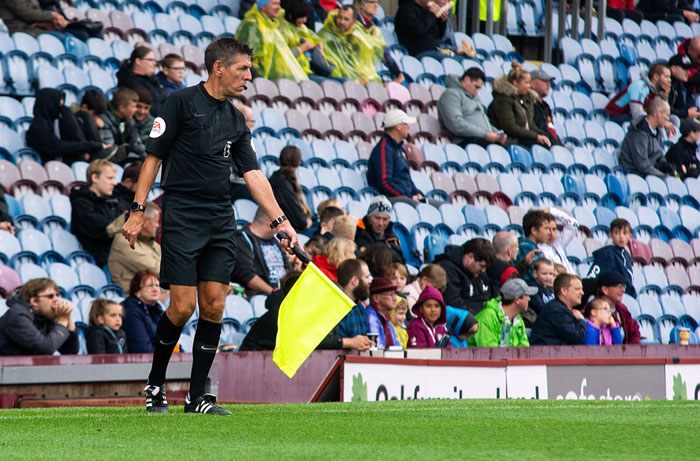Making changes to a sport, with the inclusion of new technologies, has often caused controversy. One criticism of the use of technology is that it can slow down the speed of the game, but on the other hand for many people it makes watching it more enjoyable to see the correct decisions being made. If a new technology is available, and shown to be accurate, then it should be used so that the correct decisions can be made. It is only fair to the players and teams that the right decisions are made.
Assisting the Umpires / Referees
Most professional sports in the United States have long used instant replay and other high-tech aids to help referees make the right call. Gridiron has used video replay systems to check referees’ calls for many years. Basketball referees use replay systems to make sure players are shooting within the time allotted by the shot clock. In international cricket, the third umpire has been used, one sitting off the ground with access to TV replays of certain situations (such as disputed catches and boundaries) to advise the central umpires. The umpires out on the field are in communication via wireless technology with the other umpire. The third umpire is also asked to adjudicate on run out decisions, which he makes without consultation with the two central umpires. One sport that has resisted the use of high-tech assistance until very recently is soccer/football. Replays could be used to decide off-side decisions, whether a ball passes over the goal line, and clarify penalty decisions.
Hawk-Eye Technology
Hawk-eye is the name of a computer and camera system which traces a ball’s trajectory. It is being used in international cricket and tennis, and many other sports are also looking at making use of this technology. The system is also being trialled in soccer as part of the goal line assessment. The Premier League of Football in the UK has agreed to the introduction of goal-line sensors after being given approval by football’s rule-makers. The system being developed by the UK company Hawk-Eye, would give a definitive decision on whether the ball had crossed the line. The Hawk Eye uses a camera taking 600 frames a second on the goal-line, with the information is analyzed by computer and sent to the referee’s headset or a device on his wrist. In 2015, Hawkeye technology was also used by rugby officials at the 2015 Rugby World Cup, to improve decision-making by the television match official (TMO) and also assist with player safety. In this case it is enhanced video review, rather than the ball tracking technology as used in other sports. The 2020 US Open tennis implemented the next level Hawk-Eye Live, which made line calls in real time.
Sport Specific
Tennis — it is now standard at the major tennis tournaments for a line review system to be in place, with players given power to review contentious line calls. It is powered by the Hawk-Eye ball tracking system. See more about Hawk Eye for Tennis
Soccer / Football — Soccer is looking at joining the 21st century, looking at various technologies for the goal line to determine if the pass passes over the line or not. See more about Football/Soccer Technology
Basketball — the NBA uses replay vision to review ‘last touch’ decisions in the final two minutes of games, and also to determine whether players release the ball before the shot clock expires.
Cricket — technology in cricket has been driven by advances in the TV coverage. Things that were once extra information provided by the TV networks are now being incorporated into the decision referral system (DRS), such as hawk-eye and hot spot, and maybe even the old favorite snicko. See more about Cricket Technology.
Aussie Rules Football — umpire review system has also been implemented in AFL, with an off field umpire in certain circumstances adjudicating on whether the ball passes over the goal line or is touched, using video evidence via multiple camera angles. See more about Technology in AFL.
Baseball — In 2014 a challenge system was put in place for the MLB to use replays to challenge certain umpiring decisions. See more about Technology in Baseball.
Cross-Country Skiing — There have been large advances in the sport of cross-country skiing, particularly with equipment design. See more about Technology in Cross-Country Skiing.
Rugby Union — In 2015, Hawkeye technology was used by rugby officials at the 2015 Rugby World Cup. The video review technology with synchronised camera views was used to improve decision-making by the television match official (TMO) and also used by medical staff to assist with player safety by identifying possible concussion instances and behind play incidents.
Golf — one way that technology is can used well with golf is swing analysis. There are many devices on the market that can be attached to the club to measure all sorts of things, as well as advanced video analysis tools. See more about golf technology.
Horse Racing — technology has impacts horse racing in many ways, such as timing systems, track design and safety, and optimizing jockey nutrition and training,
Rugby League — The NRL was an early implementer of using the video referee to help adjudicate questionable tries.
computer software
